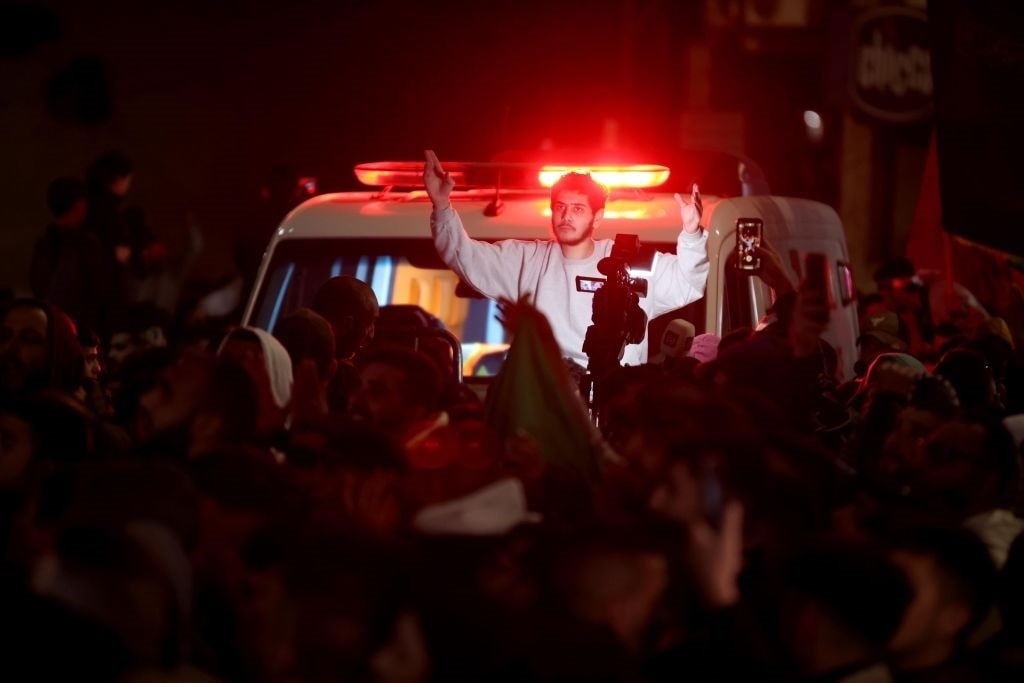As the deal draws to a close, what comes next?
The deal worked out by Qatar, Egypt, and the United States, for a four-day temporary pause in fighting between Israel and Hamas enters its fourth and final day, today, November 27. Initially, the agreement allowed for the release of 50 women and children taken hostage in the October 7 Hamas attack on southern Israel in addition to the release of 150 Palestinians held in Israeli prisons. With the last round of hostages due to be handed over, what comes next for the cease-fire and what was happening behind the scenes?
The Timed Release of Hostages
After meeting a cool reception from the Israeli government for initiating a humanitarian pause, the US envoy, Qatari representatives, and Egyptian diplomats hammered out the four-day cessation in fighting tied to the release of hostages. The cease-fire began at seven a.m. Thursday morning (Nov. 23), but the release of the first 24 hostages did not commence until around four p.m. on Friday, October 24. Among those released first from captivity were 11 Thai citizens and 13 additional Israeli children and women. The Thai nationals were released based on a separate negotiation between Qatar, Egypt, and Hamas based on reports from the region.
Dispatches from those on the ground in southern Gaza explained the Israeli hostages were turned over to Egyptian authorities at the Rafah gate by the International Red Cross and Red Crescent organizations. The one-day delay was caused when Hamas refused to provide a complete list of hostages to be turned over, according to reports from Qatar. “Senior Egyptian officials said Hamas failed to formally sign off on the mechanism for the hostages’ release and didn’t provide Israel with a specific list of around a dozen or more to be freed first,” Jared Malsin and Summer Said reported for The Wall Street Journal.

(Photo by Issam Rimawi/Anadolu via Getty Images)
The second group of 13 Israeli abductees was made up of women and children that “included six members of an extended family from the ravaged Israeli border village of Be’eri, all of whom were kidnapped during Hamas’s Oct. 7 terror attack in Israel,” The New York Times reported. Additionally, Hamas freed four more Thai nationals at the same time. As part of the exchange deal, 39 Palestinian prisoners jailed for a variety of serious crimes, including murder, were released by the Israeli government.
Typical of the terrorist leadership’s desire to inflict as much psychological pain as possible, the third release of captives on November 26 was delayed by Hamas, who claimed Israel was not delivering humanitarian aid promptly as was specified in the agreement. The Israeli government denied the claim. Supporting the Israeli contention, “More aid is also being allowed into Gaza – 137 lorries (Trucks) carrying medical supplies, fuel and food entered today from Egypt,” the BBC said in a summary of the activities at the Rafah crossing.
There was one American reportedly among the 14 Israelis and two captives of foreign citizenship in the third tranche of innocent civilians released Sunday by Hamas. According to Fox News:
“Hamas terrorists released 4-year-old Abigail Edan to Red Cross custody on Sunday, marking the first release of a US hostage since the October 7 massacre in Israel. Edan, whose fourth birthday passed while she was in captivity, is among 14 Israelis and 2 other foreign nationals released on Sunday. Edan was taken captive on Oct. 7 after Hamas terrorists murdered her parents. She is a dual US-Israeli citizen.”
Reports from the scene where the child was taken reveal the mother was killed in front of her, and she was taken from under her father’s body after he was murdered. This was just one of the hundreds of accounts of Hamas’ maniacal brutality.
Netanyahu Emphatic, Pause Is Temporary
As for what follows the four-day pause, the Israeli government has made clear the halt in fighting is temporary. “Although Israel has offered an extra day of peace for every additional ten hostages released, Prime Minister Benjamin Netanyahu made clear that the destruction of Hamas would inevitably resume,” Liberty Nation explained.
While vacationing in Nantucket, Massachusetts, President Joe Biden made remarks on Sunday, November 26, to a television audience taking credit for the “58” hostages released over the past three days, saying, “This has been the product of a lot of hard work and weeks of personal engagement for me and my team. We’ve been in close contact with leaders of Qatar, Egypt, and Israel, speaking with each one of them repeatedly over the past few weeks to help secure this deal.” Nonetheless, the crackerjack Biden negotiating team has not seen the release of the number of American hostages they’d hoped.
It is unlikely Americans in any large numbers will be released quickly as long as the number of hostages released is tied to the extension of the pause in the fighting. Currently, reports are that ten hostages, Israeli and others, will be released for each day the cease-fire is extended. At the present rate, where Hamas perniciously extends the timing for releasing each group of Israeli captives, more breathing room is accorded to Hamas and other Islamic terrorists to regroup and reallocate their combat resources. The motivation for Hamas to release hostages in the first place was the pounding they were getting from the Israel Defense Force (IDF).
Prime Minister Netanyahu reiterated the aims set for the IDF in Gaza. “We have three goals for this war: eliminating Hamas, returning all our hostages and ensuring that Gaza does not become a threat to the State of Israel again,” Netanyahu told IDF troops he visited in northern Gaza, according to a translation from Hebrew provided by the New York Post. The Biden administration would do well to pay close attention to the order of priorities of the IDF goals.
The views expressed are those of the author and not of any other affiliation.

